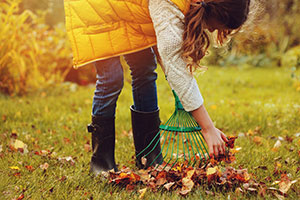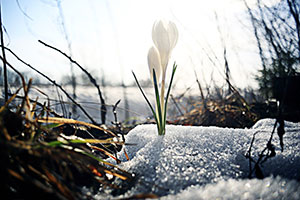Winter can be a beautiful time of the year. If you’re not caught outside in the middle of a frozen gale that is, looking at the wicked outdoors from inside with a cuppa can be relaxing. However, that’s easy enough to say from inside the comfort of your own home.
If reports are correct, the Beast from the East is due to return this winter, which means for our plants, this experience won’t be so pleasant. There are some things we can do to help though. Now is the time to start preparing and protecting your garden from winter elements and the Beast from the East. Allow Prestige Lawns to talk you through a few tips of how your garden can beat the big freeze.
Insulate Your Greenhouse
Greenhouses are great to have all year round to give your plants some extra TLC. You can control the temperature and humidity to create the perfect environment. There also protection from wind and wildlife.
If you used shade paint on your greenhouse during the winter months, then it is important to scrub this off in time for winter. Our plants naturally get much less light during winter due to shorter days and overcast skies, so our plants need all the light they can get.
Even without a heater, the temperature inside a greenhouse is roughly 3-5 degrees warmer than outside. This will protect our plants during mild frost, however, if temperatures plummet they’ll need some more insulation. Using shade netting with a low percentage or bubble wrap can insulate the greenhouse, whilst still allowing enough light to pass through.
Raise Outdoor Plant Pots
We can’t fit everything in the greenhouse, however. If you’ve plant pots outside, giving them a boost above ground level can work wonders.
The ground is 2-3 degrees colder than the air. Placing a barrier or distance between plant pots and the ground can prevent the soil from getting too cold. Pot feet or even old corks are effective at this.
Rake Your Lawn
 Towards the end of Autumn, it’s likely there’ll be piles of dead leaves scattered across your garden. Once winter comes and the wet weather causes these leaves to rot and soak into the grass, this can damage your lawn.
Towards the end of Autumn, it’s likely there’ll be piles of dead leaves scattered across your garden. Once winter comes and the wet weather causes these leaves to rot and soak into the grass, this can damage your lawn.
Raking these clear from your grass will preserve it during the winter months, especially during snowfall.
Cut Grass Mid-Length Before Winter
One good thing about winter is that there’s no need to cut your grass every week. Due to lower temperatures and less light, grass barely grows during the winter months.
Cutting your grass just once before the cold weather hits can preserve your grass and soil throughout the winter months. It’s important to do this the right length, however.
If you cut the grass too short, this forces the grass to use more nutrients to grow. It may even go into hibernation early meaning by the time spring comes around, lots of grass will be dead.
On the other hand, if you cut or leave the grass too long, say 3 inches, then it might compress under heavy snowfall. This can lead to mould and fungus growth which will also damage the grass come springtime.
An ideal length is between 2-2.5 inches.
Use Mulch
Mulching your soil with a natural compost will work wonders for your plants and preserve the fertility of your soil over winter. This also reduces weed growth and shields plant roots from the cold.
There are many things you can use as mulch. Raked leaves, grass clippings, bark, manure, sawdust. Most kinds of organic residue will do the trick.
Be sure to just put mulch on the soil, as if it comes into contact with tree stems and shrubs it can cause them to rot.
To use, simply remove weeds from your soil, then spread the mulch over the surface of the soil, about 4 inches thick.
Support Small Trees
If you’ve any young or small trees growing in the garden, they may need some extra support from the Beast from the East.
Throughout the year, small trees are subjected to damage from small animals, such as rabbits and deer. Although not the most common wildlife found in UK gardens, they can still do serious damage. When a tree has its bark bitten off by animals, this is called girdling. If this happens, the sap can’t flow past the missing bark, so the top of the tree begins to die. Wrapping the tree in a mesh cage can prevent small animals from reaching the tree.
During winter, however, smaller trees are also subject to the wintery elements. Strong winds are able to pull larger trees out of their roots, so the small ones need all the help they can get. Luckily because they’re small, it’s easy enough to place a sturdy stake by the side of a young tree. Tying the stake to a fence should seethe tree stand upright and remain rooted through winter.
Pruning
Cutting back the heads of any flowering plants in Autumn time will help the flower heads to grow when the weather starts to pick up again. Flower heads won’t grow during wintertime, so it’s best to remove the heads before this.
The same goes for trees. Removing any overgrown, diseased or damaged branches before wintertime will encourage growth for when summer comes around. Pruning trees also allows more sunlight into your garden, helping everything else to grow.
Cutting plants closer to their natural shape and getting rid of any overgrown parts also makes them more streamlined, making them less likely to lose their shape due to strong winds in winter.
Plant Evergreen & Winter Plants
Gardens in wintertime can look miserable. If your garden only contains plants which grow during warmer months, your garden will look  dull and lifeless come winter.
dull and lifeless come winter.
The solution to this is to grow plants which can survive and grow in colder conditions. There are plenty of evergreen shrubs and flowering plants which keep their leaves throughout winter, such as holly and euonymus and photinia. Keeping some colour in your garden over winter makes it seem much less dull.
Planting more colours against the green can make your winter garden look almost summery. You can grow primulas, violas and pansies can grow in flower beds in the colder months. Shrubs such as skimmia rubella and witch hazel can also survive in baskets and tubs.
Spreading out evergreen plants around the border of your garden and surrounding these with more colourful flowers will keep your garden looking pleasant through winter. Autumn is the perfect time to plant these, whilst the soil is still mild and cool.
Move Summer Plants Indoors
Some plants, however, aren’t as hardy as evergreens and will need to make taken indoors for winter. Perennials, for example, will survive in cool temperatures, however are unlikely to survive frost.
Keeping them in either a greenhouse, shed or porch should suffice. Simply cut the stems to 5-10cm from their base and lift them out of the ground using a fork and remove as much soil as possible.
Welcome Wildlife
Diverse wildlife has a positive effect on our gardens and the environment as a whole. Whether it’s insects, birds, frogs, rodents or bats, creating a natural, wild environment in your back garden can help the soil and plants flourish.
Let’s face it, having a micro-ecosystem in your own back garden is alluring. There are a few things you can do to look after the wildlife in your back garden this winter.
You can build a log pile to attract insects and buy or make a hedgehog house. Placing an old plant pot on its side halfway into the soil can also attract amphibians. Supplying garden birds with fresh water and food can help keep them warm and energised during the cold winter months.
Wild animals tend to prefer messier, more natural like areas, so be careful not to tidy your garden too much. You may accidentally remove a shelter smaller animals were living in.
There we have it. If you follow these tips, not only will your garden and plants survive the Beast from the East, they will flourish. Preparation is the best form of protection. Making a start in Autumn will see your garden ready in time for the winter elements. Some plants will need more protection than others. Recognising which plant needs what care and being proactive will ensure your garden remains colourful and vibrant this winter, allowing you to enjoy the view from inside the comfort of your own home.


 Towards the end of Autumn, it’s likely there’ll be piles of dead leaves scattered across your garden. Once winter comes and the wet weather causes these leaves to rot and soak into the grass, this can damage your lawn.
Towards the end of Autumn, it’s likely there’ll be piles of dead leaves scattered across your garden. Once winter comes and the wet weather causes these leaves to rot and soak into the grass, this can damage your lawn. dull and lifeless come winter.
dull and lifeless come winter.